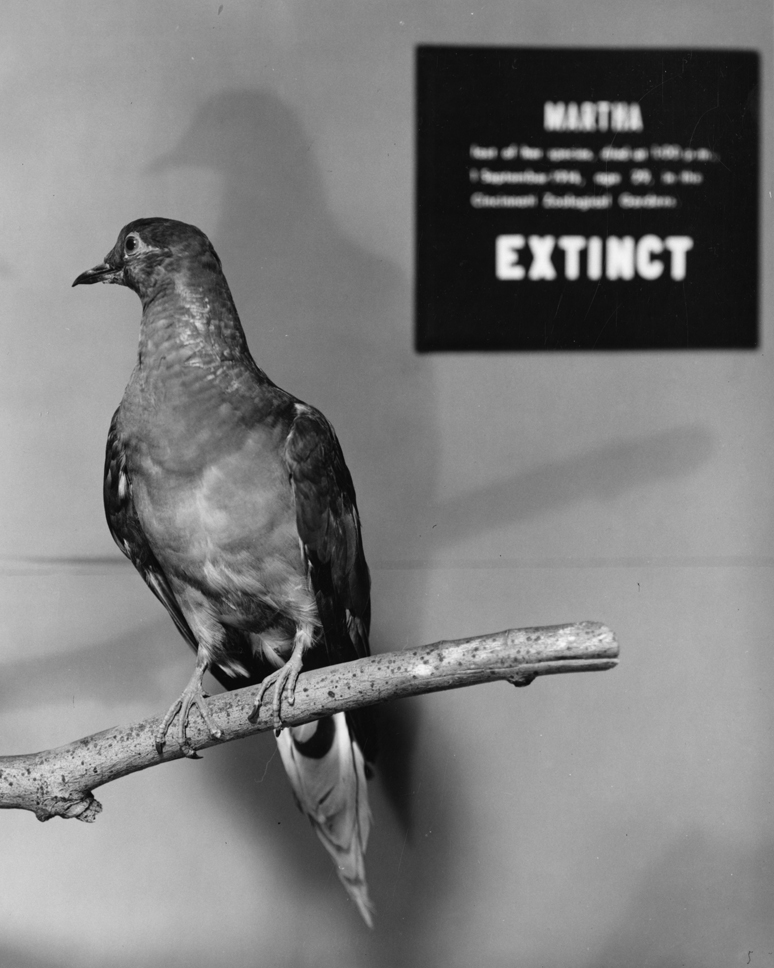Here’s a little quiz question. Which famous Martha died in September 1914? One clue: she was called Martha after George Washington’s wife. Here’s another: fifty years before her death there were 10 billion others like her. Final clue: she was the last of her kind. Answer: Martha was the last ever Passenger Pigeon, once the most numerous bird on earth, and she died at 12 noon on 1 September 1914 in the Cincinnati Zoo, Ohio. It’s the best-recorded extinction in history, and perhaps the most extraordinary. Up to the mid-nineteenth century huge flocks of these birds darkened the skies of America. We hear of one in 1813 so vast that it spread from horizon to horizon and took three days to pass over. Yet in a few decades the bird was no more. What could have happened?
The main cause was simple in fact. The immigrants from Europe had poured into America and spread west, dispossessing the native Indians, clearing the land and destroying the forests as they went. The pigeons were wholly dependent on these forests for food and nesting sites. They were also easy to hunt and their flesh was both a staple diet for the settlers and a valuable export, so they were slaughtered on an industrial scale. In the killing season extra trains were put on to convey thousands of barrels of pigeon bodies east to cities like Chicago, Philadelphia, New York and Boston.

The name ‘passenger pigeon’ isn’t a macabre reference to these train journeys, but probably derives from the French pigeon de passage or some equivalent Indian name. This was a permanently mobile species, moving on restlessly until they literally ran out of forest. It should really have been called the ‘wandering pigeon’ or ‘peregrine pigeon’.
This isn’t the only extinction of a charismatic bird, of course. Think of the great auk, last recorded in Britain in St Kilda in 1840 and killed by fishermen who were terrified by its unearthly shrieking and clubbed it to death, thinking it a witch. Or the dodo, which has entered our language as the very symbol of extinction, ‘dead as a dodo’. That was a sort of giant pigeon, too, in fact. The last of them died in 1662 in Mauritius – a fat, clumsy and trusting bird which was butchered by sailors grateful for an easy meal.
It couldn’t happen again, could it? But when did you last see or hear the British cousin of the passenger pigeon, the turtle dove? That used to be the soundtrack of summer with its gentle purring song. They were common here once, but I didn’t hear one anywhere this year, or last …
Jeremy Mynott
3 September 2024








